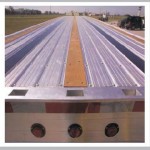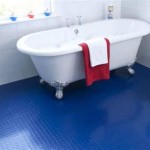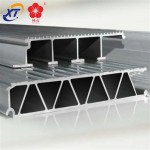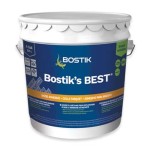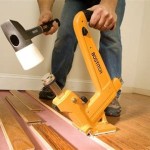White Washed Distressed Flooring: A Comprehensive Guide
White washed distressed flooring is a popular choice for homeowners seeking a blend of rustic charm and modern aesthetics. It offers a unique design element that can brighten a room while simultaneously conveying a sense of history and character. This article will explore the various aspects of white washed distressed flooring, including its benefits, types, installation, maintenance, and design considerations.
Benefits of White Washed Distressed Flooring
White washed distressed flooring offers a multitude of advantages that contribute to its widespread appeal.
Firstly, its light, typically white or off-white, hue significantly brightens a space. This is particularly beneficial in rooms with limited natural light, making them feel more open and airy. The light color reflects light, effectively expanding the perceived dimensions of the room.
Secondly, the distressed finish adds character and visual interest. The intentional imperfections, such as knots, grains, saw marks, and even simulated wear and tear, provide a sense of history and authenticity. This aged appearance can complement a variety of design styles, from farmhouse to coastal to contemporary.
Thirdly, white washed distressed flooring provides a practical advantage: it effectively conceals dirt, dust, and minor scratches. This makes it a more forgiving option compared to darker, less textured flooring choices. Regular sweeping and occasional mopping are typically sufficient to maintain its appearance.
Fourthly, it can increase property value. According to Zillow a hardwood refinish yields a 100% return on investment. The timeless aesthetic and perceived durability associated with this type of flooring can be a significant selling point for potential buyers.
Finally, white washed distressed flooring is versatile in its application. It can be installed in various rooms throughout the house, including living rooms, bedrooms, kitchens, and even bathrooms, depending on the material used and the level of moisture resistance it offers.
Types of White Washed Distressed Flooring
The term "white washed distressed flooring" encompasses a range of materials and techniques. Understanding these variations is crucial for selecting the best option for a specific project.
Solid Hardwood: Solid hardwood is the traditional choice for flooring. When white washed and distressed, it offers unparalleled authenticity and longevity. The process typically involves sanding the wood, applying a white or off-white stain or paint, and then distressing the surface through techniques such as wire brushing, hand-scraping, or adding artificial wormholes. This type of flooring can be repeatedly refinished, making it a durable and sustainable investment.
Engineered Hardwood: Engineered hardwood consists of a thin layer of real wood veneer bonded to a core of plywood or other composite material. This construction provides greater stability and resistance to moisture and warping compared to solid hardwood. White washing and distressing techniques are applied to the veneer layer. Engineered hardwood is often easier and less expensive to install than solid hardwood.
Laminate: Laminate flooring is a synthetic material that mimics the appearance of real wood. A photographic image of wood is printed onto a layer of paper, which is then covered with a protective wear layer. Laminate flooring is generally more affordable and easier to maintain than hardwood, but it lacks the authentic feel and potential for refinishing. White washed distressed laminate flooring can be a cost-effective option for achieving the desired aesthetic.
Vinyl: Vinyl flooring is another synthetic option that is highly durable and water-resistant. It is available in various formats, including planks, tiles, and sheets. Vinyl flooring can be printed with a white washed distressed wood pattern and often features текстурированные surfaces to enhance realism. It is particularly suitable for bathrooms, kitchens, and other areas prone to moisture.
Tile: Ceramic or porcelain tile can also be manufactured to mimic the look of white washed distressed wood. This option is exceptionally durable, water-resistant, and easy to clean. Tile is ideal for high-traffic areas and can be used with underfloor heating systems. Although it lacks the warmth of wood, it offers a practical and long-lasting solution.
Each material offers distinct advantages and disadvantages in terms of cost, durability, maintenance, and aesthetic appeal. Careful consideration should be given to the specific requirements of the project and the desired outcome before making a selection.
Installation and Maintenance
The installation process for white washed distressed flooring varies depending on the chosen material. Proper installation is crucial for ensuring the longevity and performance of the flooring.
Solid Hardwood Installation: Solid hardwood typically requires professional installation. The subfloor must be level and dry. The wood planks are typically nailed or glued to the subfloor. Adequate expansion gaps must be left around the perimeter of the room to accommodate seasonal changes in humidity. After installation, the floor may require a final coat of sealant or finish.
Engineered Hardwood Installation: Engineered hardwood can often be installed as a floating floor, meaning it is not directly attached to the subfloor. Instead, the planks are connected to each other using a click-lock system or other interlocking mechanism. This method is generally easier than solid hardwood installation and can be suitable for DIY projects. Gluing down is also an option but generally less common.
Laminate and Vinyl Installation: Laminate and vinyl flooring are also often installed as floating floors using click-lock systems. Some types of vinyl flooring may require gluing down, particularly in areas with high moisture. Proper preparation of the subfloor is essential to ensure a smooth and even surface.
Tile Installation: Tile installation requires specialized skills and tools. The subfloor must be perfectly level and capable of supporting the weight of the tile. Thin-set mortar is used to adhere the tiles to the subfloor, and grout is applied between the tiles to fill the gaps. A sealant should be applied to the grout to prevent staining and moisture penetration.
Maintenance of white washed distressed flooring generally involves regular sweeping or vacuuming to remove dirt and debris. Mopping with a damp mop and a mild cleaning solution is recommended for deeper cleaning. Harsh chemicals and abrasive cleaners should be avoided, as they can damage the finish. For hardwood floors, occasional refinishing may be necessary to restore the appearance and protect the wood. Protective mats or rugs should be placed in high-traffic areas to prevent excessive wear and tear.
Design Considerations for White Washed Distressed Flooring
White washed distressed flooring offers a versatile backdrop for various design styles, but careful consideration should be given to the overall aesthetic of the space.
Color Palette: White washed flooring pairs well with a wide range of color palettes. Neutral colors, such as grays, beiges, and creams, create a sophisticated and calming atmosphere. Bold colors, such as blues, greens, and reds, can add a pop of vibrancy and contrast. Consider the existing furniture, wall colors, and accessories when selecting the color palette for the room.
Furniture Styles: This type of flooring complements both modern and traditional furniture styles. Sleek, minimalist furniture can create a contemporary look, while antique or rustic furniture can enhance the distressed aesthetic. Mixing different furniture styles can add visual interest and create a unique and personalized space.
Lighting: Lighting plays a crucial role in highlighting the texture and color of white washed distressed flooring. Natural light is ideal, but artificial lighting can also be used effectively. Warm-toned lighting can create a cozy and inviting atmosphere, while cool-toned lighting can enhance the brightness and modernity of the space. Consider using a combination of ambient, task, and accent lighting to create a well-lit and visually appealing environment.
Rugs and Accessories: Area rugs can add warmth, texture, and color to a room with white washed distressed flooring. Choose rugs that complement the overall color palette and design style of the space. Accessories, such as throw pillows, artwork, and decorative objects, can further enhance the aesthetic and personalize the room.
Wall Treatments: The wall treatments should complement the flooring and the overall design style of the room. Painted walls, wallpaper, or wood paneling can all be used effectively. Consider the color, texture, and pattern of the wall treatment to create a cohesive and visually appealing space.
Ultimately, the key to successful design with white washed distressed flooring is to create a balance between the rustic charm of the flooring and the overall aesthetic of the room. Careful planning and attention to detail can result in a beautiful and inviting space that reflects personal style and preferences.

Whitewashed Distressed Oak Wooden Flooring Hicraft

45 Cozy Whitewashed Floors Décor Ideas Digsdigs White Washed Painted Wood Home

Love The Look Of Distressed White Washed Wood Floors Easy To Do Yourself Too Floor Mat Flooring Wash

Whitewashed Distressed Oak Wooden Flooring Hicraft

Distressed Plywood Plank Floor Whitewashed Mountain Home Architects Timber Frame Architect Custom Homes

10 Waterproof Vinyl Flooring With A Whitewashed Shabby Chic Look Digsdigs Bathroom Bathrooms Kitchen

Antique And Aged French Oak Flooring Vintage Historic Decorative Materials A Division Of Pavé Tile Wood Stone Inc

How To Whitewash Wood In 3 Simple Ways A Piece Of Rainbow

Antique And Aged French Oak Flooring Vintage Historic Decorative Materials A Division Of Pavé Tile Wood Stone Inc

Wood Floor Refinishing And Whitewashing The Honeycomb Home
Related Posts

